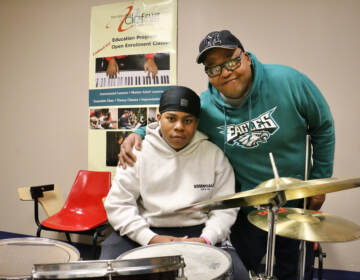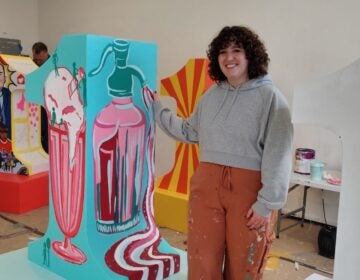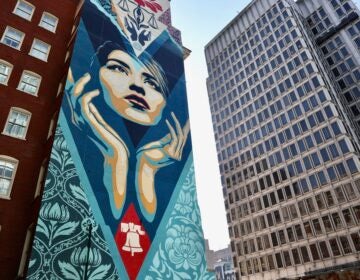A crane rises in Chinatown
Mural Arts Philadelphia developed a giant, iconic image on the new 21-story Crane Building that can be seen for miles.
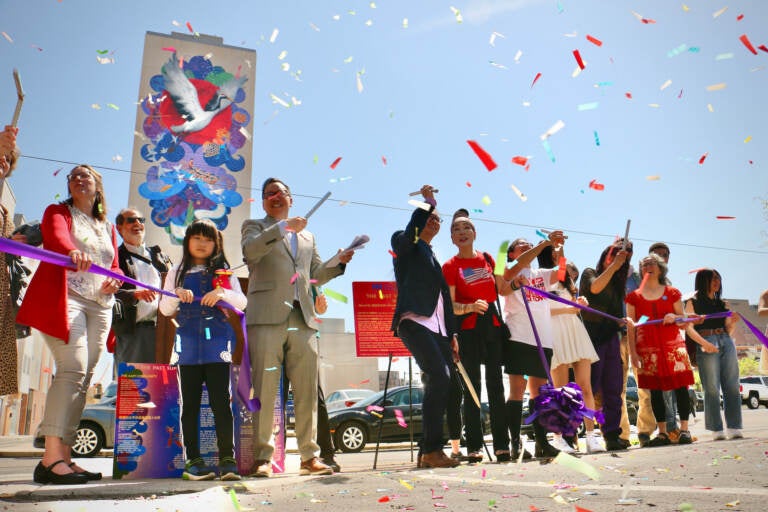
Representatives of Mural Arts and members of the Philadelphia Chinatown community celebrate the dedication of ''The Past Supporting the Future,'' a mural that covers the upper half of the west wall of the 21-story Crane Chinatown Community Center at 10th and Vine streets. (Emma Lee/WHYY)
A few months ago, a 54-foot crane mural emerged on the side of a 21-story building in Chinatown, which became a beacon for the neighborhood. It looms over the Vine Street Expressway, plainly visible to the approximately 100,000 cars that use that freeway daily.
“I had someone from 20-something and Lehigh Avenue say that they can see this mural,” said John Chen, executive director of the Philadelphia Chinatown Development Corporation, about a resident of a North Philadelphia neighborhood three miles away. “It’s so large, it’s so visible, it makes our job easier to tell the story of why Chinatown is here, why we’re important.”
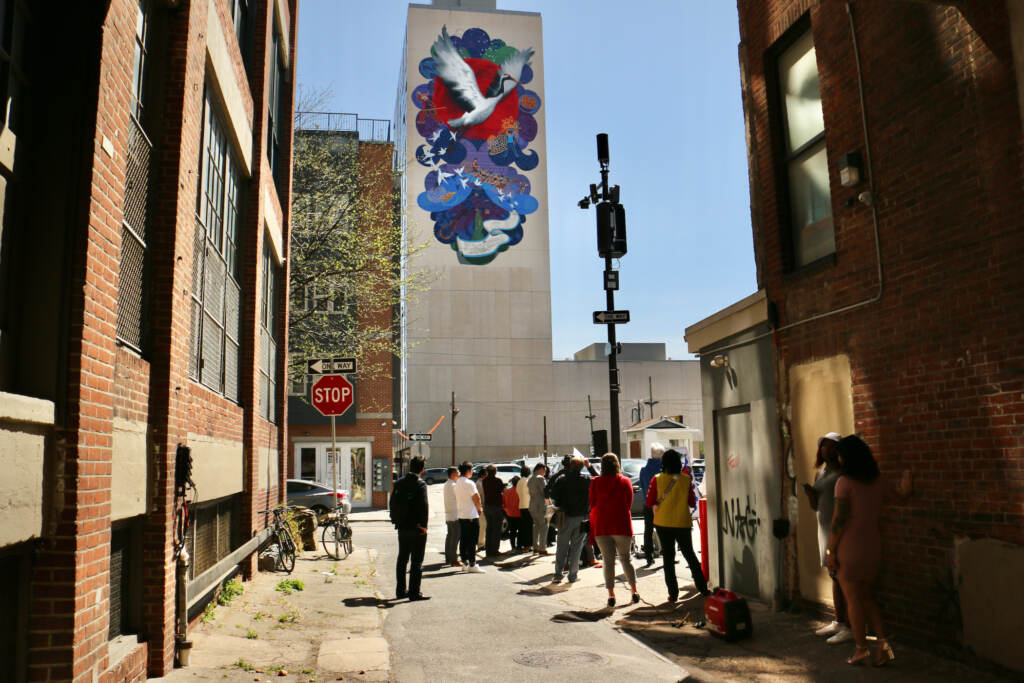
“The Past Supporting the Future,” a 6,000-square-foot mural on the side of the new mixed-use Crane Building, was developed by Mural Arts Philadelphia, through Philadelphia Housing Development Corporation’s 1% for Art program. It was officially dedicated on Wednesday.
The design of a large crane in flight — a traditional symbol of longevity — set against a red, rising sun, is surrounded by images of the history of Philadelphia’s Chinatown: a scroll depicting the 1991 protests aimed at blocking the development of I-676 that bisected the neighborhood, ramen and dim sum dishes that have made the neighborhood a dining destination, annual dragon dancing from Chinese New Year, and fabric patterns sourced from cultures throughout the Asian, Southeast Asian, and Pacific Island regions.
The design was informed by community outreach workshops that went far beyond the boundaries of Chinatown. One of the lead artists, Yvonne Lung, said it was important to design the mural to reflect the experiences of many Asian American Pacific Islander people in the city. For example, she met with Cambodians in South Philadelphia that remembered coming into Chinatown for special occasions.
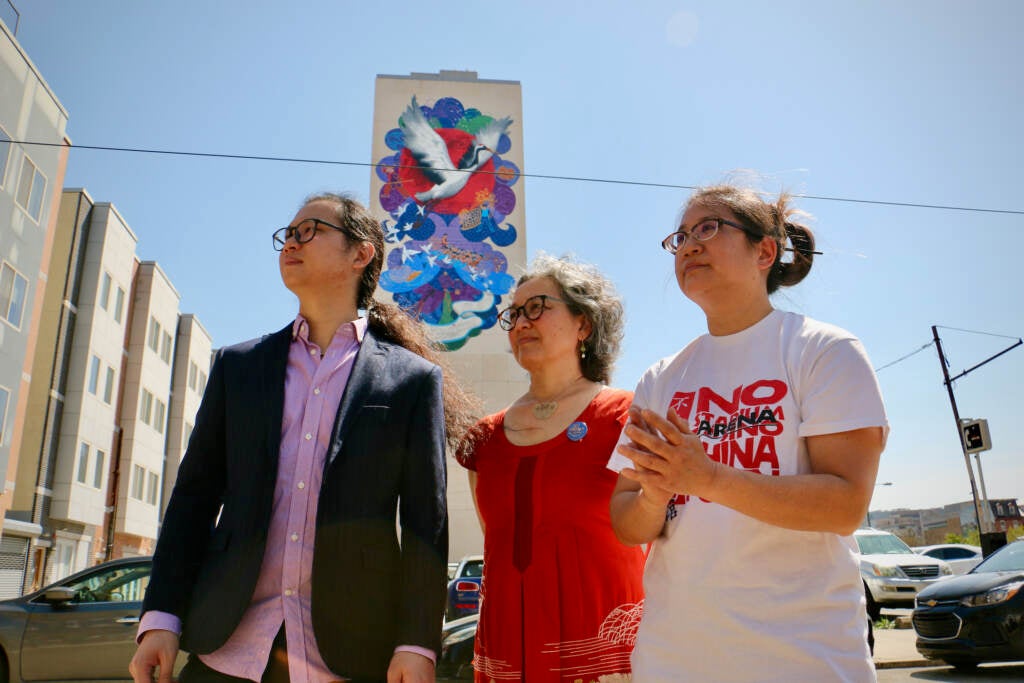
“They would do their wedding celebrations or birthday celebrations in the restaurants in Chinatown because they hadn’t developed that Cambodian community that is now in South Philadelphia,” Lung said. “When they first come this is a landing spot, even though it may not be their exact country. They may not be Chinese, but for them it’s a place where it’s still that familiarity.”
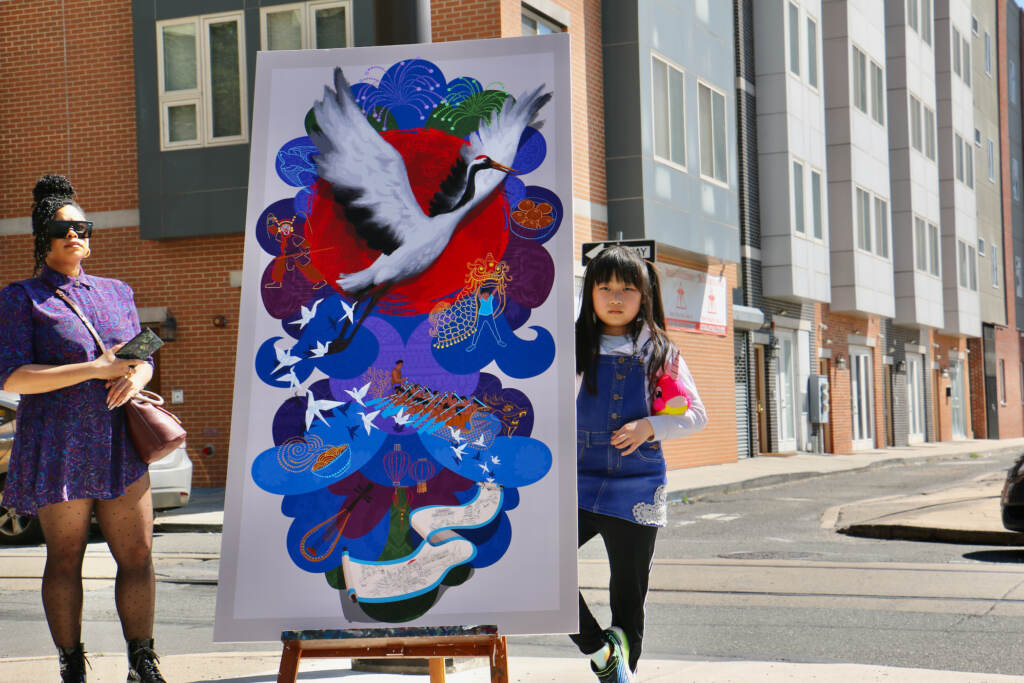
During the dedication ceremony, Lung got emotional as she thanked community members for sharing their stories with her. Some of their stories, particularly about their immigration experiences, were filled with trauma.
“The trauma was so recent that it was not something for us to push for,” she said. “Sometimes what is left behind is not easy to be brought up. For some of the people that did bring that up, I was really grateful that they were willing to talk about it and let us understand.”
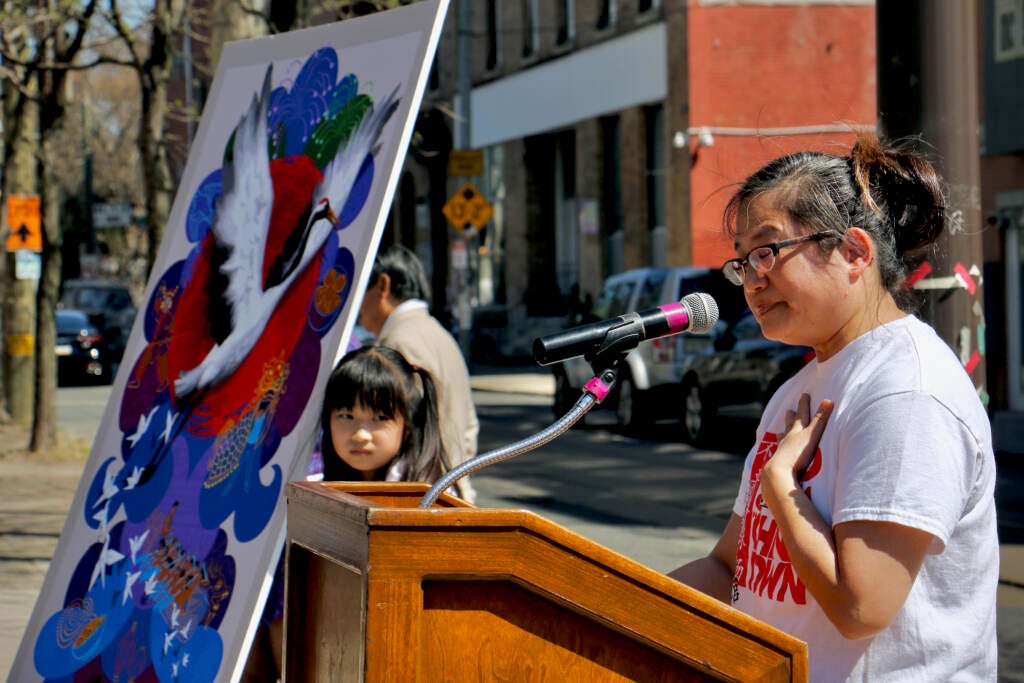
At the dedication ceremony, Lung intentionally wore a protest t-shirt denouncing the recent proposal to build a 76ers basketball stadium in Chinatown. The shirt’s message is an updated version of the same protest several years ago — against a proposed casino development.
“Chinatowns around the country are dying because of land grabbing developers, gentrifying the community and pushing out the AAPI community that live and work here,” she said. “This is not the first time our community is being destroyed by projects that are being proposed in the heart of this community, of our community.”
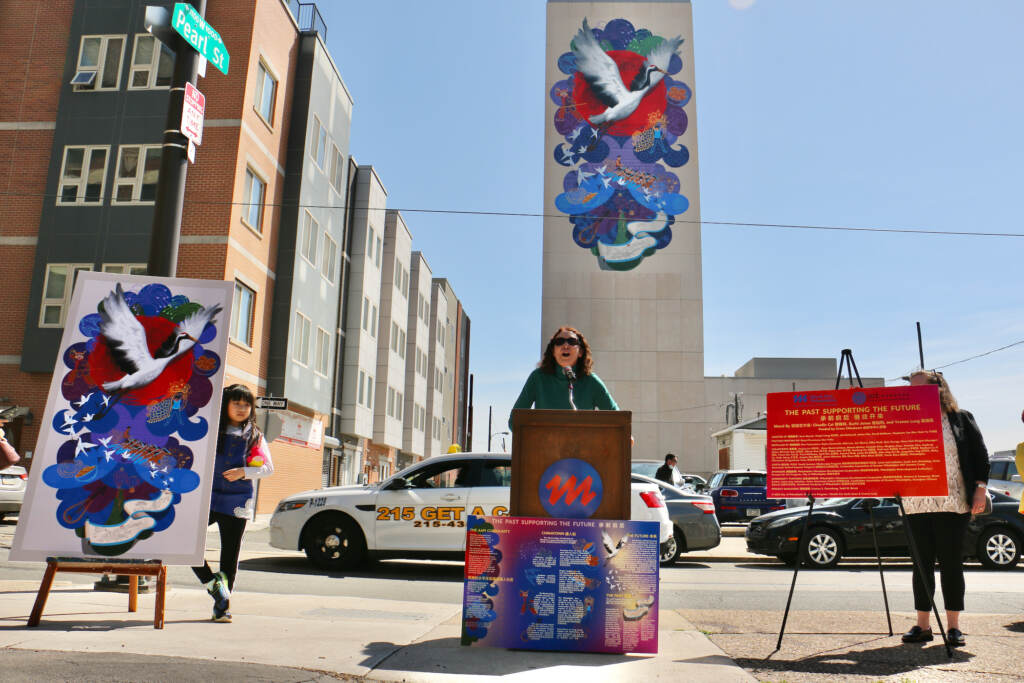
Chen, of the Chinatown CDC, said the mural is not a protest mural and is not designed to address contemporary cultural, political, or development conflicts. It’s supposed to be a permanent icon, lasting decades with regular maintenance.
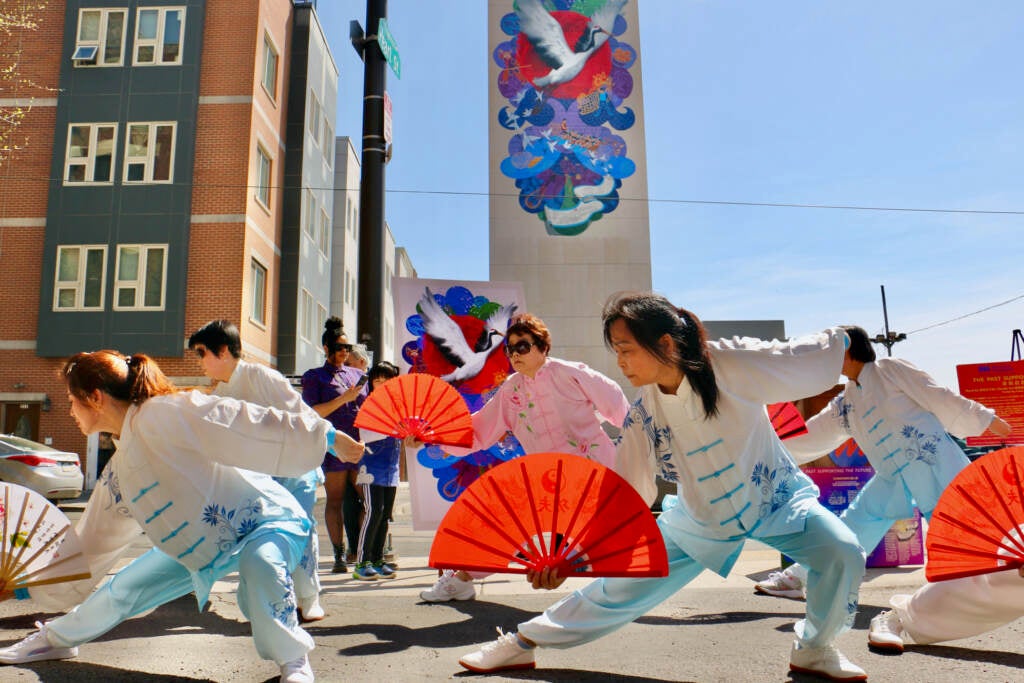
“A picture paints 1000 words — 10,000 words,” he said. “It basically says: We hear your criticisms — your invalid criticisms — but we’re here to stay. We’ve been here over 150 years. We’re not going anywhere. We are first and foremost American, but we are very proud of our Chinese heritage.”

Get daily updates from WHYY News!
WHYY is your source for fact-based, in-depth journalism and information. As a nonprofit organization, we rely on financial support from readers like you. Please give today.




